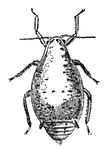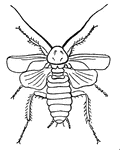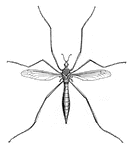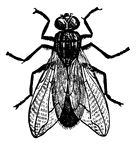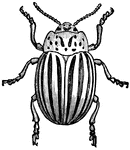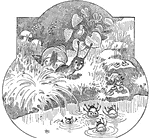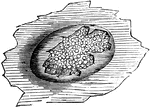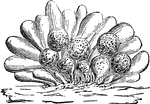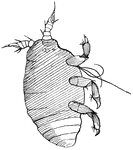
Leaf Insect
Walking Sticks and Leaf Insects lead a sluggish life among the branches of shrubs, living on the young…
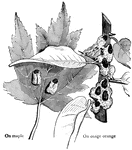
Scale
The scale bugs, or bark lice, are very injurious to trees: some of them are among the worst pests of…

Wood Louse
Wood-lice are commonly found under stones or in crevices of old walls. When disturbed, they curl up…

Wood Louse
Wood-lice are commonly found under stones or in crevices of old walls. When disturbed, they curl up…

Aphid
Numerous species of aphids, or plant lice, are known, and they are among the greatest pests of the gardener…
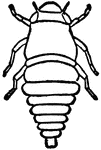
Larval Frog Hopper
"Frog Hoppers are ranked under the homopterous sub-order of insects. The name of frog hopper refers…
Frog Hopper on Leaf
"Frog Hoppers are ranked under the homopterous sub-order of insects. The name of frog hopper refers…

Adult Frog Hopper
"Frog Hoppers are ranked under the homopterous sub-order of insects. The name of frog hopper refers…
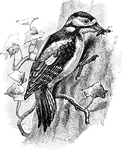
Great Spotted Woodpecker
A loud bird that uses it beak to bore holes in tree trunks to feed on bugs.

Ladybug
"Lady-bird beetles, or "lady bugs." These beetles are very destructive to plant lice." — Goff,…

Ladybug
"Lady-bird beetles, or "lady bugs." These beetles are very destructive to plant lice." — Goff,…

Ladybug
"Lady-bird beetles, or "lady bugs." These beetles are very destructive to plant lice." — Goff,…
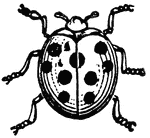
Ladybug
"Lady-bird beetles, or "lady bugs." These beetles are very destructive to plant lice." — Goff,…
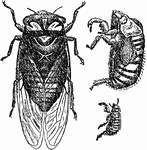
Cicada Pruinosa
This species can be heard in summer and autumn at most any time making its peculiar trilling noise in…

Cicada Septendecim
Also known as the Seventeen-Year Locust, derives its specific name from the fact that it makes its appearance…

Planthopper
Otiocerus coquebertii, a small insect of a somewhat elongated form and having a small projection in…

Fulgora
A most singularly-formed insect; the front part of its head being much prolonged, and projecting upward…

Black Leaf-Leg
A small homoterous insect, Phylloscelis Atra (var. pallescens) is not uncommon among…
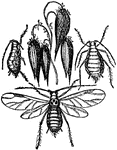
Aphis Avence
Grain or oat-plant louse, does much injury to grain, and especially to oats, but is also found on wheat,…

Aphis Gossypii
Also known as the Cotton-plant louse, is a great nuisance to the planters, especially when the plants…
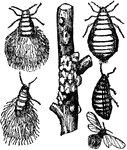
Wooly Aphid
Eriosoma Lanigera, or the Wooly Apple-Tree Blight. These insects appropriate for their generic name…
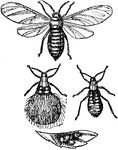
Wooly Aphid
Eriosoma Imbricata. Found very abundantly on birch in Maryland in October. These insects cluster together…
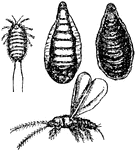
Aspidiotus Citricola
Scale-insect, was found on imported lemons in Jacksonville, Fla. This insect is said to be allied to…

Apple Plant Louse
The females deposit their eggs, which are small, oval, and black, on twigs and bark in the autumn; the…

Apple Plant Louse
The females deposit their eggs, which are small, oval, and black, on twigs and bark in the autumn; the…

Hickory Aphis
A large aphis is found in clusters on the under side of limbs of hickory, oak, and basswood and walnut,…

Wooly Aphid
Eriosoma Tesselata was found on birch in Maryland, in clusters near the ends of twigs, in the autumn.…
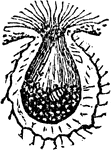
Fitch
A grape-vine leaf gall-louse. The insect forms galls on the under side of the grape-vine leaves, and…

Grape-Root Louse
Phylloxera Vastatrix, a grape-vine-root gall-louse, is by many entomologists supposed to be another…
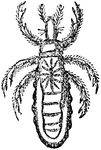
Crab Louse
Pediculus Pubis. The crab-louse is gray-black and is a much broader square form than the other two species…

Dragonfly
A dragon-fly and its development. Larva and pupa feeding at 1 and 3; 2, nymph ready to change; 4, a…


